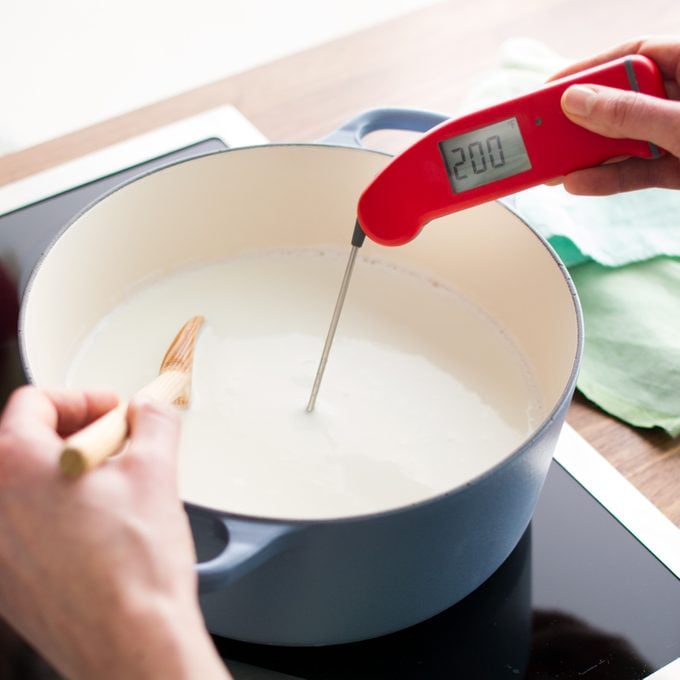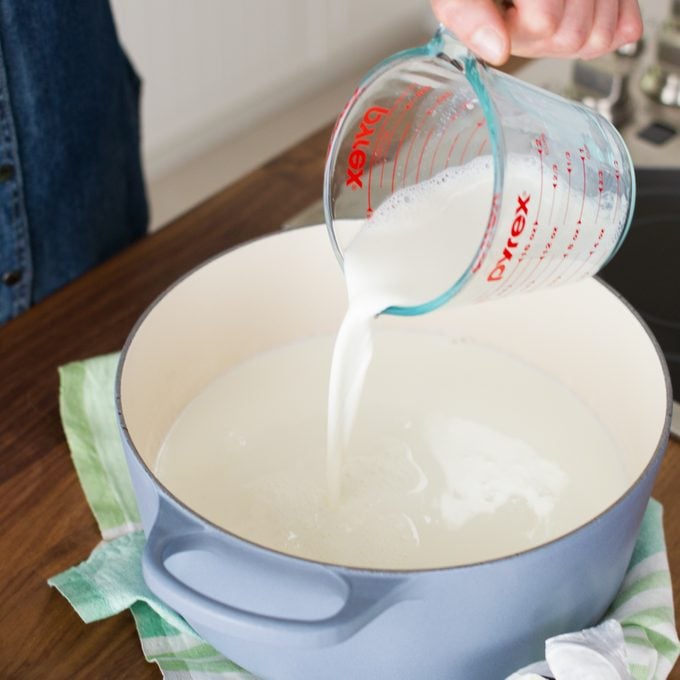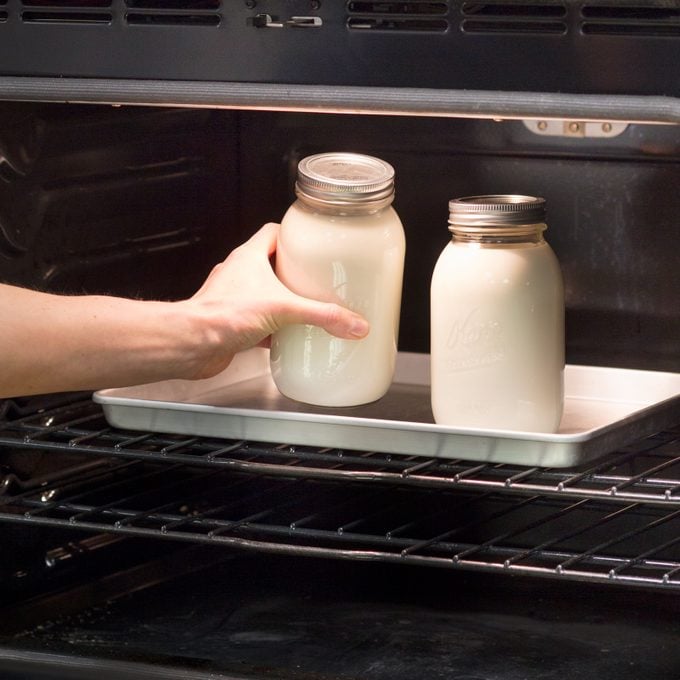How to Make Yogurt at Home
Updated: May 17, 2023

Turn a dollop of yogurt into a whole tub. But how does it work? Our intrepid yogurt-loving reporter shares the scoop on how to make yogurt at home.
Secret’s out: I’m a little bit obsessed with yogurt. But can you blame me?
Sprinkle a little homemade granola on top and you’ve got breakfast. Spread a dollop on braised meat and you’ll never use sour cream again. And don’t get me started on yogurt desserts and recipes.
So when I learned that you can make yogurt at home, I was floored. With a few simple steps, you can turn two tablespoons of plain yogurt into two quarts. Amazing! Let’s see how it’s done.
How Is Yogurt Made?
At its core, yogurt is created by fermenting milk, or letting bacteria cultures build up in the milk until it’s thick and tangy.
This method is really all about the temperature. Too high a temperature will kill off the good bacteria in your starter, but too low a temperature will stop your bacteria from growing at all.
For all you cringing at the word bacteria—don’t worry. It’s the probiotic kind that’s good for your gut. Intrigued by fermentation? This old-school cooking method may be the boost your diet needs.
Need yogurt ASAP? Try one of these yogurt substitutes!
What Do You Need for Homemade Yogurt?
A “starter” is the term we use for the cultures that’ll transform your milk into yogurt. By far, the simplest starter you can get is store-bought yogurt. You can grab any plain variety, but it must include live active cultures. (It’ll say so on the label.)
Avoid yogurts that are filled with additives like pectin, inulin, corn starch or gelatin. These can give your homemade yogurt a grainy texture. Also skip any flavored or sugary yogurts.
Got your yogurt? The only other ingredient is milk. It’s important to use pasteurized milk, which will create the best environment for your starter to grow. Most milk in the U.S. is pasteurized. Avoid ultra-pasteurized (UP), ultra-high temperature treatment (UHT) and raw milk.
How to Make Yogurt
Ingredients
- 2 quarts pasteurized whole milk
- 2 tablespoons plain yogurt with live active cultures
Directions
Step 1: Heat the milk

In a Dutch oven, gradually heat the milk over medium heat. You’ll want to take it slowly, stirring occasionally to prevent scorching. Warm the milk until a thermometer reads 200°F. It shouldn’t boil.
Step 2: Remove from heat and let cool
Remove the pan from the heat and let it cool. Stir every once in a while until a thermometer reads 112°-115°. This is the ideal temperature for your starter to incubate.
Test Kitchen Tip: Place the pan in an ice-water bath for faster cooling.
Step 3: Add starter

To combine, whisk 1 cup warm milk into the yogurt in a small bowl until smooth. Then return that mixture to the Dutch oven and stir gently. Transfer to warm, clean jars with lids, such as 1-qt. canning jars, and cover.
Step 4: Incubate

For the next 6-24 hours you’ll want to keep the jars in a warm place (about 110°) to incubate. Make sure that your oven maintains this heat. A conventional oven with the light on will do the trick.
Let the containers stand, undisturbed, until yogurt is set. The longer they stand, the more thick and tart the yogurt will be.
Some other suitable places for your yogurt to incubate: inside a slow cooker set to “low,” or wrapped in a heating pad. Test with a thermometer to make sure the temp is right.
Step 5: Enjoy
Check to see if the yogurt has set by gently tilting the jars. (It’s thicker when it sets, and it will thicken further when you refrigerate it.)
When the consistency is to your liking, whisk to form a smooth, creamy texture. Cover the finished yogurt and pop it into the fridge until cold.
Tips for Making Yogurt at Home
The fresher the milk, the better. This’ll help keep the consistency smooth and creamy. Dairy-free milk works with this process as long as there is a sweetener, like white sugar, to aid fermentation. Honey and syrup will interfere with the bacteria.
This method works on Greek yogurt as well. If anything, we recommend a plain Greek yogurt. If you don’t have a starter, green chili stalks or curdled milk with lemon juice can be good substitutes!
Be sure to save a few tablespoons of your homemade yogurt so you can use it as a starter for your next batch! It’ll freeze well if you can’t make more yogurt right away, or it’ll last up to two weeks in the fridge.




















